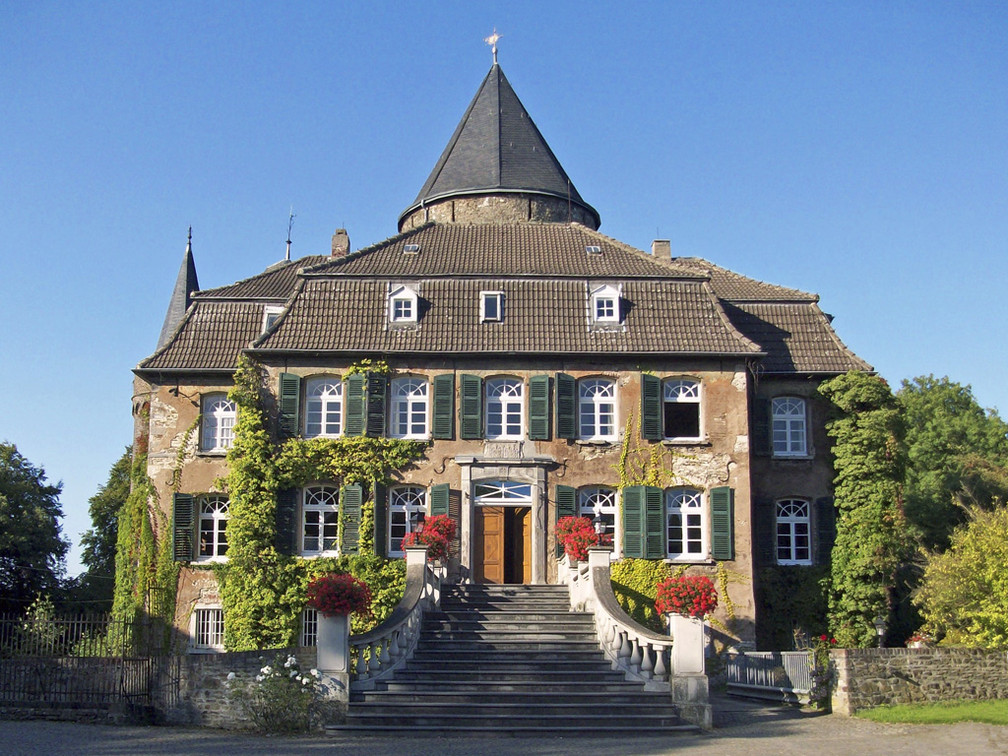Linnep was first mentioned in a document as a knight's seat with a fortified tower from 1090 - 1120. A conversion took place in 1769, during which the old tower building was framed and the original bark wall was integrated. Around the middle of the 19th century further alterations took place. The castle is surrounded by a moat, Westphalian for moat, through which the small Hummelsbach flows. The moat served to defend aristocratic residences and, as can often be seen today, was mostly part of the horticultural design of moated castles. The courtyard of Linnep Castle is fortified as a bailey. There is the gate system, as well as farm buildings. Southwest of the moated castle is one of the oldest reformed church buildings in the Rhineland, in the form of the Linnep forest church, which was blessed in 1684. In the immediate vicinity of the church is also the old half-timbered building of the Schlossmühle am Hummelsbach, which was temporarily an inn and now part of an attached stables.
Today, Linnep Castle is used by couples in love for a civil wedding and subsequent reception. Furthermore, the depot of the castle can be booked for other celebrations and conferences.
Today, Linnep Castle is used by couples in love for a civil wedding and subsequent reception. Furthermore, the depot of the castle can be booked for other celebrations and conferences.
Good to know
Hygiene and infection control measures
The current hygiene and infection protection measures of the state of North Rhine-Westphalia apply.
Arrival & Parking
There are parking spaces at the depot and the church on Linneper Weg.
Further information
Since Linnep Castle is an event location, it is not possible to visit the building without further ado.
author
Office for Culture and Tourism
Organization




